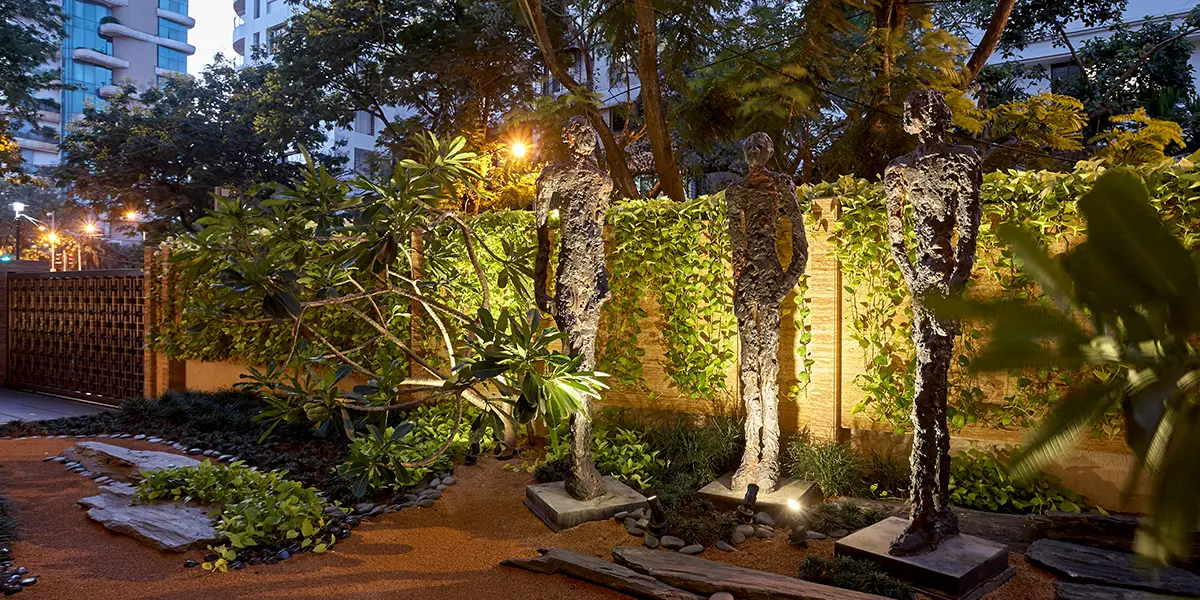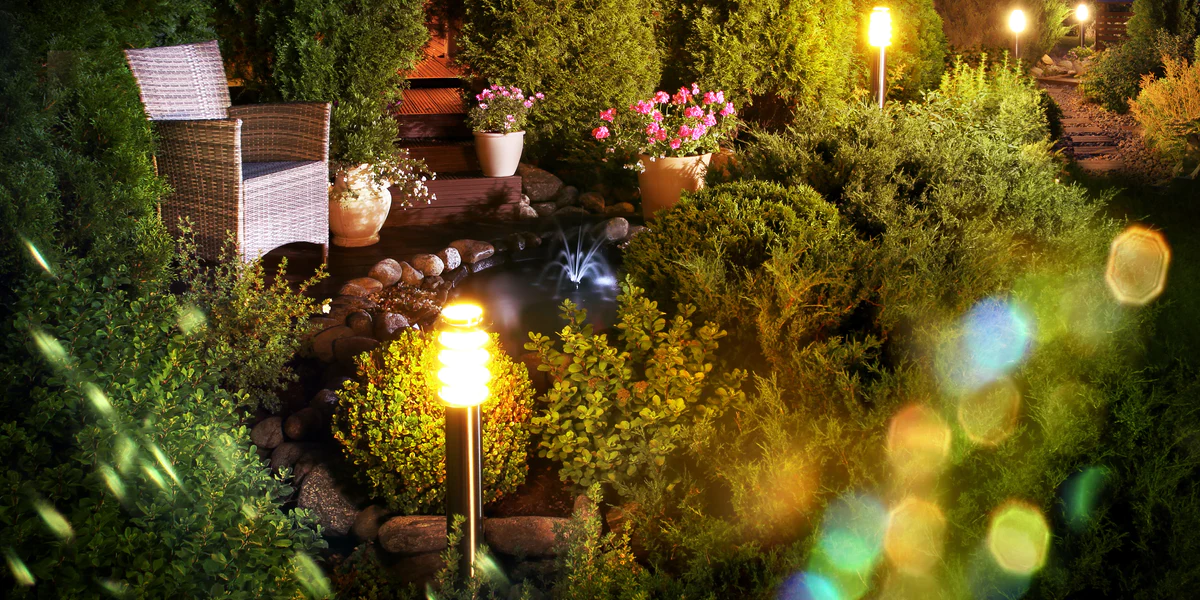Gardens are not just outdoor spaces; they are extensions of our homes, providing a tranquil escape from the hustle and bustle of daily life. One way to enhance the beauty and ambiance of your garden is through thoughtful lighting design. In this article, we’ll explore how you can illuminate your garden to create a captivating atmosphere that beckons you to linger and enjoy its beauty.
Understanding the Role of Lighting in Creating Ambiance
The first step in crafting ambiance with lighting in garden design is to understand the role that lighting plays. Lighting serves both functional and aesthetic purposes in the garden. It not only illuminates pathways for safety but also highlights key features and creates mood and ambiance.
When considering lighting options for your garden, it’s essential to distinguish between natural and artificial lighting. Natural light, such as sunlight, varies throughout the day and can create different effects in the garden. Artificial lighting, on the other hand, allows you to control the ambiance and mood of your garden after dark.
Types of Garden Lighting Fixtures
There are various types of lighting fixtures available to illuminate your garden. Each type serves a specific purpose and can contribute to the overall ambiance of your outdoor space. Some common types of garden design lighting fixtures include:
Path Lights
Path lights are designed to illuminate pathways, driveways, and walkways, guiding visitors safely through the garden at night. They come in a variety of styles and designs, from traditional lanterns to modern, sleek fixtures.
Spotlights
Spotlights are used to highlight focal points in the garden, such as trees, sculptures, or architectural features. They can create dramatic effects by casting shadows and adding depth to your landscape.
String Lights
String lights are versatile lighting options that can be draped over trees, pergolas, or fences to create a warm and inviting atmosphere. They are perfect for adding a touch of magic to outdoor gatherings or al fresco dining.
Lanterns
Lanterns are classic lighting fixtures that add charm and character to any garden. They come in a variety of shapes and sizes and can be hung from trees or placed on tables to create a cozy ambiance.
Design Principles for Illuminating Your Garden
When designing your garden design lighting scheme, it’s essential to consider several key principles to achieve the desired ambiance and effect.
Highlighting Focal Points
Identify the focal points in your garden, such as statues, water features, or architectural elements, and use lighting to draw attention to them. By highlighting these features, you can create visual interest and enhance the overall beauty of your garden.
Layering Lighting for Depth and Texture
Layering different types of lighting creates depth and texture in your garden, adding visual interest and dimension. Combine path lights, spotlights, and string lights to illuminate different areas of your garden design and create a cohesive lighting scheme.
Considering Safety and Functionality
While aesthetics are essential, safety should always be a priority when designing garden lighting. Ensure that pathways and steps are well lit to prevent trips and falls, and consider installing motion-sensor lights for added security.
Selecting the Right Lighting for Different Garden Features

Not all lighting fixtures are created equal, and different garden features may require different types of lighting. Here are some tips for selecting the right lighting for common garden features:
Trees and Shrubs
Use up-lighting to highlight the beauty of trees and shrubs, casting dramatic shadows against the foliage. This creates a magical effect and adds depth to your garden at night.
Flower Beds
Accentuate the colors and textures of your flower beds with well-placed spotlights or string lights. This not only highlights your blooms but also extends the enjoyment of your garden into the evening hours.
Water Features
Water features such as ponds, fountains, and waterfalls can be transformed into mesmerizing focal points with the right lighting. Use underwater lights to illuminate the water from below and create a tranquil ambiance.
Planning and Installation Tips for Garden Lighting
Before installing garden lighting, take the time to plan your lighting scheme carefully. Consider the layout of your garden, the location of power sources, and the specific features you want to highlight. Here are some tips for planning and installation:
Assessing Your Garden’s Layout and Features
Walk around your garden at different times of day to assess how natural light interacts with the landscape. This will help you identify areas that need additional lighting and determine the best placement for fixtures.
Choosing Energy-Efficient Options
Opt for energy-efficient LED lighting fixtures to minimize energy consumption and reduce your carbon footprint. LED lights are long-lasting, cost-effective, and available in a variety of colors and intensities to suit your needs.
DIY vs. Professional Installation
While some garden lighting projects can be tackled as DIY projects, others may require the expertise of a professional. Consider your skill level, budget, and the complexity of the project before deciding whether to tackle the installation yourself or hire a professional.
Maintenance and Care for Garden Lighting Fixtures

Once your garden lighting is installed, it’s essential to maintain and care for your fixtures to ensure they continue to perform optimally. Here are some maintenance tips to keep in mind:
Cleaning and Protecting Fixtures
Regularly clean your lighting fixtures to remove dirt, debris, and corrosion that can accumulate over time. Use a soft cloth and mild detergent to clean the fixtures, and apply a protective coating to prevent rust and weather damage.
Checking for Damaged Wiring or Bulbs
Inspect your lighting fixtures regularly for signs of damage, such as frayed wiring or burnt-out bulbs. Replace any damaged components promptly to prevent safety hazards and ensure consistent illumination.
Enhancing Ambiance with Creative Lighting Techniques
In addition to traditional lighting techniques, there are several creative lighting techniques you can use to enhance the ambiance of your garden:
Silhouetting
Silhouetting involves placing a light source behind a focal point to create a dramatic silhouette against a blank wall or backdrop. This technique adds depth and mystery to your garden and can highlight the unique shapes and forms of plants and structures.
Moonlighting
Moonlighting mimics the soft, diffused light of the moon by placing fixtures high in trees or on elevated surfaces. This creates a gentle, natural glow that bathes your garden in soft light, perfect for creating a romantic or ethereal ambiance.
Up-Lighting and Down-Lighting
Up-lighting involves placing fixtures at ground level to illuminate trees, shrubs, and other vertical elements from below. This creates a striking effect by casting shadows and highlighting the texture and form of plants. Down-lighting, on the other hand, involves mounting fixtures overhead to cast light downward, creating pools of light and shadow on the ground below.
Conclusion
In conclusion, lighting plays a crucial role in creating ambiance and atmosphere in garden design. By carefully selecting and installing lighting fixtures, you can transform your outdoor space into a magical retreat that invites you to relax, unwind, and reconnect with nature. Whether you prefer soft, romantic lighting or bold, dramatic effects, there are endless possibilities for illuminating your garden and bringing your vision to life.
